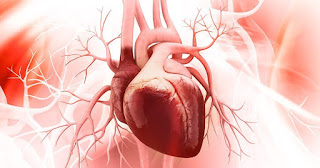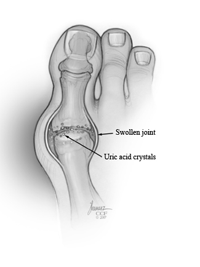 |
| Congenital heart disease in Adults |
Congenital heart disease is one or more
problems with the heart's structure that exist since birth. Congenital means
that you're born with the defect. Congenital heart disease, also called
congenital heart defects, can change the way blood flows through your heart.
Some congenital heart defects might not cause any problems. Complex defects,
however, can cause life-threatening complications.
Advances in diagnosis and treatment
have allowed babies with congenital heart disease to survive well into
adulthood. Sometimes, signs and symptoms of congenital heart disease aren't
seen until you're an adult.
If you have congenital heart disease you likely will need care throughout your life. Check with your doctor to determine how often you need a checkup.
Symptoms of
Some congenital heart defects cause no
signs or symptoms. For some people, signs or symptoms occur later in life. And
symptoms can return years after you've had treatment for a heart defect.
Common congenital heart disease
symptoms in adults include:
- Abnormal
heart rhythms (arrhythmias)
- A
bluish tint to the skin, lips, and fingernails (cyanosis)
- Shortness
of breath
- Tiring
quickly upon exertion
- Swelling
of body tissue or organs (edema)
When to see a doctor
If you're having worrisome symptoms, such as chest
pain or shortness of breath, seek emergency medical attention.
If you have signs or symptoms of congenital heart
disease or were treated for a congenital heart defect as a child, make an
appointment to see your doctor.
Causes
Researchers
aren't sure what causes most types of congenital heart disease. Some congenital
heart diseases are passed down through families (inherited).
Understanding congenital heart disease helps to know how the heart works.
- The heart is divided into chambers — two upper chambers (atria)
and two lower chambers (ventricles).
- The right side of the heart moves blood to the lungs through
blood vessels (pulmonary arteries).
- In the lungs, the blood picks up oxygen and then returns to the
left side of your heart through the pulmonary veins.
- The left side of the heart then pumps the blood through the
aorta and out to the rest of the body.
Congenital
heart disease can affect any of these heart structures, including the arteries,
valves, chambers, and the wall of tissue that separates the chambers (septum).
Risk
Factors
Certain environmental and genetic risk
factors might play a role in the development of congenital heart disease,
including:
- Your
genes. Congenital
heart disease appears to run in families (inherited) and is associated
with many genetic syndromes. For instance, children with Down syndrome
often have heart defects. Genetic testing can detect Down syndrome and
other disorders during a baby's development.
- German
measles (rubella). Having rubella during pregnancy may
affect how the baby's heart develops while in the womb.
- Diabetes. Having
type 1 or type 2 diabetes during pregnancy also may affect a baby's heart
development. Gestational diabetes generally doesn't increase the risk of
congenital heart disease.
- Medications. Taking
certain medications while pregnant can cause congenital heart disease and
other birth defects. Drugs linked to heart defects include lithium
for bipolar disorder and isotretinoin (Claravis, Myorisan, Zenatane, and others), which is used to treat acne. Always tell your doctor about the
medications you take.
- Alcohol. Drinking
alcohol while pregnant also contributes to the risk of heart defects in
the baby.
- Smoking. A
mother who smokes while pregnant increases her risk of having a child with
a congenital heart defect.
Complications
Congenital heart disease complications
that might develop years after you receive treatment include:
- Irregular
heartbeats (arrhythmias). Arrhythmias occur when the electrical
signals that coordinate your heartbeat don't work properly. Your heart may
beat too fast, too slowly, or irregularly. In some people, severe
arrhythmias can cause stroke or sudden cardiac death if not treated. Scar
tissue in your heart from previous surgeries can contribute to this
complication.
- Heart
infection (endocarditis). Endocarditis is an infection of the
inner lining of the heart (endocardium). It generally occurs when bacteria
or other germs enter your bloodstream and move to your heart. Untreated,
endocarditis can damage or destroy your heart valves or trigger a stroke.
If you are at high risk of endocarditis, it's recommended that you take
antibiotics one hour before dental cleanings. Regular dental checkups are
important. Healthy gums and teeth reduce the risk that bacteria will enter
the bloodstream.
- Stroke. A
congenital heart defect can allow a blood clot to pass through your heart
and travel to your brain, where it reduces or blocks blood supply.
- Pulmonary
hypertension. This
is a type of high blood pressure that affects the arteries in your lungs.
Some congenital heart defects send more blood to the lungs, causing pressure
to build. This eventually causes your heart muscle to weaken and sometimes
to fail.
- Heart
failure. Heart
failure (congestive heart failure) means your heart can't pump enough
blood to meet your body's needs. Some types of congenital heart disease
can lead to heart failure.
Adult congenital heart disease and pregnancy
Women with mild congenital heart
disease can have a successful pregnancy. However, some women with complex
congenital heart defects are advised against pregnancy.
If you're thinking about becoming
pregnant, talk to your doctor about the possible risks and complications.
Together you can discuss and plan for any special care you might need during
pregnancy.
Diagnosis
To diagnose congenital heart disease,
your doctor will do a physical exam and listen to your heart with a
stethoscope. You will be asked questions about your symptoms and medical and
family history.
Tests to diagnose or rule out
congenital heart disease include:
- Electrocardiogram
(ECG). This
painless test records the electrical signals in your heart.
An ECG can diagnose many heart problems, including irregular
heartbeats and blocked arteries. Sometimes, ECGs are done while
you exercise, typically on a bike or treadmill. This method is called a
stress test.
- Chest
X-ray. These
images can show changes in the size and shape of your heart and problems
with your lungs.
- Pulse
oximetry. A
small sensor attached to your finger can estimate how much oxygen is in
your blood.
- Echocardiogram. Sound
waves (ultrasound) create images of the moving heart. Your doctor can use
this test to see how your heart's chambers and valves are pumping blood
through your heart. Echocardiograms may also be done while you exercise,
typically on a bike or treadmill.
- Transesophageal
echocardiogram. If
more-detailed images of your heart are needed, your doctor may recommend a
transesophageal echocardiogram. In this test, a flexible tube containing
the transducer is guided down your throat and into the tube connecting
your mouth to your stomach (esophagus). It's done while you are sedated.
- Cardiac CT scan
and MRI. These
tests create images of your heart and chest. Cardiac CT scans
use X-rays. Cardiac MRI uses a magnetic field and radio waves to
create images of your heart. For both tests, you lie on a table that
slides inside a long tubelike machine.
- Cardiac
catheterization. Your
doctor might use this test to check blood flow and blood pressure in your
heart. You'll be given sleeping medication. Then, the doctor gently
inserts a catheter into an artery or vein in your groin, neck, or arm and
up to your heart. X-rays are used to guide the catheter to the correct
position. Sometimes, dye is injected through the catheter. The dye helps
blood vessels show up better in the images.
Treatment
Congenital heart disease can often be
treated successfully in childhood. However, some heart defects may not be
serious enough to repair during childhood, but they can cause problems as you
grow older.
Treatment of congenital heart disease
in adults depends on how severe your heart problem is. You may simply be
monitored, or you may need medications or surgery.
Watchful waiting
Relatively minor heart defects might
require only occasional checkups with your doctor to make sure your condition
doesn't worsen. Ask your doctor how often you need to be seen.
Medications
Some mild congenital heart defects can
be treated with medications that help the heart work more efficiently. You
might also need medications to prevent blood clots or to control an irregular
heartbeat.
Surgeries and other procedures
Several surgeries and procedures are
available to treat adults with congenital heart disease.
- Implantable
heart devices. A
device that helps control your heart rate (pacemaker) or that corrects
life-threatening irregular heartbeats (implantable
cardioverter-defibrillator or ICD) may help improve some of the
complications associated with congenital heart defects.
- Catheter-based
treatments. Some
congenital heart defects can be repaired using catheterization techniques.
These treatments allow a repair to be done without open-heart surgery.
Instead, the doctor inserts a thin tube (catheter) into a leg vein or
artery and guides it to the heart with the help of X-ray images. Once the
catheter is positioned, the doctor threads small tools through the catheter
to repair the defect.
- Open-heart
surgery. If
catheter procedures can't fix your heart defect, your doctor might
recommend open-heart surgery.
- Heart
transplant. If
a serious heart defect can't be repaired, a heart transplant might be an
option.
Follow-up care
If you're an adult with congenital
heart disease, you're at risk of developing complications — even if you had
surgery to repair a defect during childhood. Lifelong follow-up care is
important. Ideally, a cardiologist trained in treating adults with congenital
heart defects will manage your care.
Follow-up care may include regular doctor checkups and occasional bloodwork and imaging exams to screen for complications. How often you'll need to see your doctor will depend on whether your congenital heart disease is mild or complex.
( Keywords )




Post a Comment